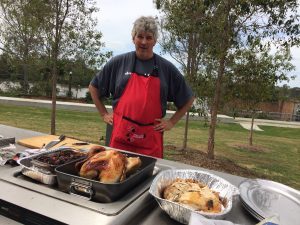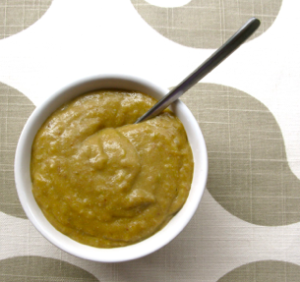Once made, quickly refrigerate tamales to limit spore growth, and frying may not be the best reheating option. Microwaves are lousy for cooking but great for reheating.
 This study analyzed the behavior of Clostridium perfringens in individual ingredients and tamales containing different pathogen concentrations upon exposure to different temperatures and methods of cooking, storage, and reheating.
This study analyzed the behavior of Clostridium perfringens in individual ingredients and tamales containing different pathogen concentrations upon exposure to different temperatures and methods of cooking, storage, and reheating.
In ground pork, C. perfringens cells were inactivated when exposed to 95°C for 30 min. Three lots of picadillo inoculated with 0, 3, and 5 log CFU/g C. perfringens cells, respectively, were exposed to different storage temperatures. At 20°C, cell counts increased 1 log in all lots, whereas at 8°C, counts decreased by 2 log. Four lots of tamales prepared with picadillo inoculated with 0, 2, 3, and 7 log CFU/g prior to the final cooking step exhibited no surviving cells (91°C for 90, 45, or 35 min). Four lots of tamales were inoculated after cooking with concentrations of 0, 0.6, 4, and 6 log CFU/g of the pathogen and then stored at different temperatures. In these preparations, after 24 h at 20°C, the count increased by 1.4, 1.7, and 1.8 log in the tamales inoculated with 0.6, 4, and 6 log inoculum, respectively. When they were stored at 8°C for 24 h, enumerations decreased to <1, 2.5, and 1.9 log in the tamales inoculated with 0.6, 4, and 6 log of C. perfringens cells, respectively. However, when the lots were exposed to 20°C and then 8°C, 0.8, 1.8, and 2.4 log changes were observed for the tamales inoculated with 0.6, 4, and 6 log, respectively.
 Microwaving, steaming, and frying to reheat tamales inoculated with 6 log CFU/g C. perfringens cells showed that the pathogen was inactivated after 2 min of exposure in the microwave and after 5 min of exposure to steam. In contrast, no inactivation was observed after 5 min of frying. The tamales inoculated with spores (7 log most probable number [MPN]/g) showed a decrease of 2 log after steaming or frying, and no survival was observed after microwaving. Tamales inoculated with spores (7 log MPN/g) after cooking were susceptible to microwaves, but 2.4 and 255 MPN/g remained after frying and steaming, respectively.
Microwaving, steaming, and frying to reheat tamales inoculated with 6 log CFU/g C. perfringens cells showed that the pathogen was inactivated after 2 min of exposure in the microwave and after 5 min of exposure to steam. In contrast, no inactivation was observed after 5 min of frying. The tamales inoculated with spores (7 log most probable number [MPN]/g) showed a decrease of 2 log after steaming or frying, and no survival was observed after microwaving. Tamales inoculated with spores (7 log MPN/g) after cooking were susceptible to microwaves, but 2.4 and 255 MPN/g remained after frying and steaming, respectively.
Behavior and inactivation of enterotoxin-positive Clostridium perfringens in pork picadillo and tamales filled with pork picadillo under different cooking, storage, and reheating conditions
Journal of Food Protection®, Number 5, May 2016, pp. 696-889, pp. 741-747(7)
Villarruel-López, A.; Ruíz-Quezada, S. L.; Castro-Rosas, J.; Gomez-Aldapa, C. A.; Olea-Rodríguez, M. A.; Nuño, K.; Navarro-Hidalgo, V.; Torres-Vitela, M. R.
http://www.ingentaconnect.com/contentone/iafp/jfp/2016/00000079/00000005/art00007












